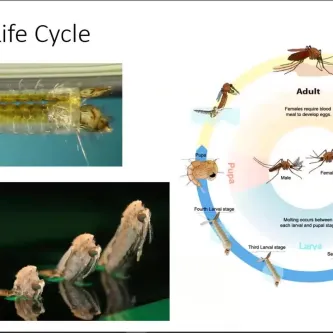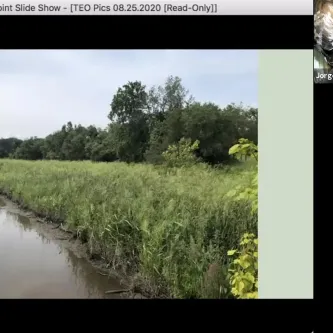Search
Invasive Species
In the Wrong Place at the Right Time: Invasive Species
Humans have moved species of plants and animals around, introducing them to new habitats, for as long as we’ve been on Earth. Early humans chased animals around or moved seeds when they ate fruits. Today, there are a variety of intentional ways that humans move other species around. For example, pets are imported, crops are transported, fish are stocked in ponds, livestock are moved to farms, and flowers are shipped. Many of these introduced species have been beneficial, such as European honeybees that have proved to be excellent pollinators in the U.S. But, other introduced species have become invasive. Invasive species are those that escape from our control, spreading and causing harm to ecosystems.
Oops, that was not the intent!
There are an unfortunate number of examples of species that humans have intentionally introduced, but later regretted introducing. Cane toads were brought to Australia in the 1930s to control populations of beetles that were harming the sugar cane crop. The toads thrived in their new habitat, not only eating the beetles, but eating other native insects, frogs, and bird eggs. Australia has since spent millions of dollars trying to control the cane toads that have spread all over the country. Eucalyptus trees were introduced to California as ornamentals. Their fast growth, flammability, and toxic leaves have allowed them to out-compete native trees, spreading way beyond their intended boundaries. Both examples illustrate the challenge of accurately predicting outcomes when species are introduced to new habitats they have never occupied.
Oops, that was not meant to be moved!
Many unintentional introductions have also resulted in invasive species. Plant seeds that get stuck on clothing or vehicle tires may travel long distances from where they originated. Insects that get trapped in cars are released into new habitats. Unintentional introductions are not confined to travel on land. When ships fill their ballast tanks, the seawater may contain living organisms. Zebra mussels from a ship’s ballast were introduced to the Great Lakes in the 1980s, and spread to other waterways throughout the U.S., becoming a menace as they clogged up pipes, reduced populations of native mussels, and damaged ship hulls. Millions of dollars have been spent trying to control these invasive mussels.
What makes a species invasive?
Many species that get introduced to new habitats do not survive because the conditions are not what they are adapted to survive in. The introduced species that do survive tend to have certain characteristics, such as the ability to reproduce quickly and out-compete species that are native to the habitat. Many introduced species have the advantage that a new habitat lacks the predators or parasites that have evolved to prey on it. For example, shortly after World War II, venomous brown tree snakes were accidentally introduced to the island of Guam, probably from ships. Encountering no natural predators, they spread rapidly and became voracious predators of native wildlife. Bird populations on Guam have still not recovered.
The impacts are not trivial
The immediate impacts of invasive species on humans range from annoying to catastrophic. Bullfrogs native to the eastern United States have invaded the west, reducing populations of native fishes and frogs. Allowing hunting of the invasive bullfrogs, and sales of frog legs in fine restaurants, has in some places softened their impact on the native ecosystems. Northern snakehead fish introduced to the Chesapeake Bay watershed have proved so destructive to native fishes and other wildlife that Maryland and Virginia have passed laws to keep them in check. (Maryland has renamed the fish the Chesapeake channa.) The rats that many people in the U.S. take for granted (black and Norway rats, introduced from Europe) inflict billions of dollars worth of damage to stored grain on farms in the U.S. every year.
When you transfer an organism, you also can transfer its associates, including parasites and predators. Transfers of oysters and ornamental plants have spread diseases and animal pests to many parts of the world. Think before you move an animal or plant around!
This page was updated October 31, 2024.

